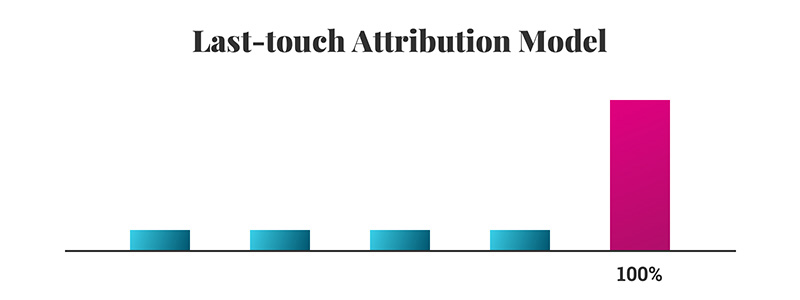What is Multi-Touch Attribution? Simple Explanation For Beginners
Every day YouTube hits billions of hours of viewing, while Google receives over 3.5 million searches. With all this digital traffic, it becomes difficult for digital marketers to track where it all comes from. Consumers leave behind digital footprints, which marketers can then use to track back to the sources used.
By utilizing this information, marketers can create a personalized experience for your consumer. How do you know if you are losing out on customers? If you are, do you know who is interested in what you have to offer? For instance, did they experience any pain points during the customer journey that made them leave the buying process?
Another thing that marketers find extremely difficult is checking what was the turning point was during the experience. That’s where multi-touch attribution comes into the picture. Let’s find out more about multi-touch attribution and how you can use it.
Multi-touch attribution is a type of marketing measurement that helps marketing managers understand how each touchpoint influences a consumer and plays a role in converting them into customers. In simple words, it links marketing activities to business outcomes.
Optimizing campaigns to offer a customized experience
Whenever you are interested in buying something, you research a bit about it on different websites. After that, you start seeing display ads of those products on other websites, Facebook, and Twitter. These ads don’t motivate you to visit the website and make the purchase.
But just as you are about to leave the social media platform, you see a sponsored post from that particular brand. It motivates you to sign-up for updates. After a while, you receive a promotional email with a discount code. You make a purchase, the product reaches you, and you are happy with it. You get what you are looking for, and you know that it is a brand you can trust. They are responsive, and they meet all your needs. If a brand is on social media, it extra layer of
transparency to it.

Analyzing this customer behavior
As a customer, you see multiple banner ads of the product by merchants that sell it but you weren’t influenced to buy it. However, you did end up buying the product when you saw an ad from the brand itself.
And then, you received an email, which motivated you even further. As a marketing manager, you should understand that the generic banner ads didn’t affect the consumer but ads from the main brand and the promotional emails did. This tells you where you should focus and where you shouldn’t to boost conversion leads.
Let’s take a look at the eight data-driven multi-touch attribution models:
1. Last-Touch Attribution
It gives sales credit to the last touchpoint of interaction before the sale.

2. First-Touch Attribution
It gives sales credit to the first touchpoint of interaction that started the conversion process.
3. U-shaped Model
In this model, 40% importance is given to the first and the last touchpoint, while the remaining is divided into three touchpoints. Each gets 20% value.
4. Linear Attribution
In Linear Attribution, each touchpoint gets the same amount of value.
5. W-shaped Model
Three touchpoints get the most value in the W-shaped model – first touch, lead conversion point, and last touch. Every touch gets an equal value of 30%. The remaining is distributed among the remaining touch points.
6. Time Decay Model
The value of touchpoint increases as the user gets close to the conversion touchpoint, which
receives 40% of value.

7. Full Path Model
It is a technical method, which is similar to W-shaped model, but includes an extra touchpoint
called customer close touchpoint. Four touches get an equal value of 22.5% and the remaining
10% goes to any additional points.
8. Custom Model
It is specifically created by an organization to track customers and to create a customized chart
for every experience. It is mostly used for research purposes.
A marketer uses several methods to chart multi-touch attribution. The process of tracking touchpoints for creating the chart is called ‘attribution tracking.’ Multi-touch attribution is the best way to understand how a business reaches its customers and to optimize marketing efforts.

1. Covers all marketing channels
In another analytics method, the main source of conversion is tested, but in multi-touch attribution, you analyze every touchpoint.
2. Understands the complexity of B2B sales cycle
In a B2B cycle, stakeholders interact with each other to make the sale happen but it is often neglected by analytics. Multi-touch attribution takes into consideration every type of interaction, which helps in understanding marketing in a better way.
3. Helps to understand the importance of marketing channels
Every marketing channel is important, but without a complete picture, you can’t tell which one works the best. It will help in deciding which channels you should concentrate on and the budget for those marketing campaigns.
4. Suits every type of company
There are over eight types of multi-touch attribution methods, which means that the testing methods will suit every type of company across multiple sectors and industries. Apart from being versatile, the methods are insightful and help to plan a marketing strategy in a short amount of time.
How do you plan to use multi-touch attribution methods for your company?